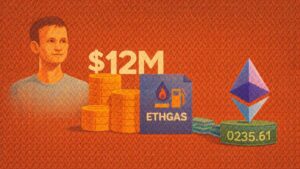The much-awaited Ethereum Shanghai hard fork upgrade, which is aimed at giving Ethereum cryptocurrency network users access to their staked ether (ETH) funds for the first time, has been executed on the Goerli testnet.
This marks the last test run before Ethereum validators will be able to withdraw their ether (ETH) from the beacon chain, which was not possible before.
It is meant to bring about significant changes to the Ethereum network and is considered a major change for the decentralized platform as it will provide users with a new level of control over their staked Ethereum funds.
Some Problems Arise With the Shanghai Upgrade
However, despite the features that the Ethereum Shanghai hard fork upgrade is expected to bring, there were issues that arose during its execution. Tim Beiko, an Ethereum core developer, noted that although deposits were being processed, the process did not run as smoothly as it could have.
Deposits are being processed (https://t.co/CxYtPcGMCp), but it seems like several validators haven't upgraded. Looking into it 👀
One challenge with testnet validators is that given the ETH is worthless, there's less incentive to run a validator/monitor it.
— timbeiko.eth (@TimBeiko) March 14, 2023
This was because several testnet validators failed to upgrade their client software before the Goerli fork, which caused some issues with the hard fork execution.

He attributed it to testnet validators having “less incentive” to update because the Goerli ETH is worthless, but he anticipates validators will make the necessary changes before the fork on the Ethereum mainnet.
Tim Beiko believes that the significant number of withdrawal credential changes processed immediately at the fork is another possible cause. There are a lot more changes that need to be evaluated, as this is the first time that users can submit those changes, which could result in missed blocks or attestations on low-resource nodes.
In addition, Ethereum researcher “Terence.eth” revealed that it took 15 epochs for Shapella to fork onto the Goerli testnet since network participation was under the two-thirds requirement.
Goerli has successfully upgraded to Shapella! 🚀
As every testnet tradition, ppl forget to upgrade or mess up on setups. The network participation is below 2/3. We'll hopefully finalize soon! 🤞
More to come!
— terence.eth (@terencechain) March 14, 2023
He affirmed that there was no issue with the client software and that all that was required was for the offline operators to upgrade. “It was a good stress test,” the researcher stated.
Despite these slight challenges, the Ethereum community remains hopeful that the upgrade will eventually be successful and bring about the desired changes to the Ethereum platform and the entire cryptoverse.










